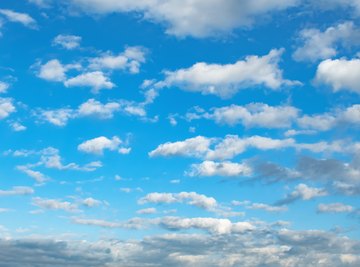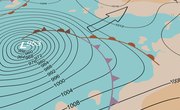
The science of forecasting the weather gets better as new weather satellites are launched into orbit and technology improves. Meteorologists rely on data from satellites, ships, airplanes, weather stations and buoys, and devices dropped from airplanes or weather balloons. Climatologists and meteorologists utilize two basic types of forecasting: deterministic and probabilistic, both of which have multiple subsets. A deterministic forecast predicts a specific event that will occur at a precise location and place, as in the arrival of a hurricane or the touchdown of a tornado.
Probabilistic weather predictions suggest the prospect of weather events that may occur in a certain region during a set period, as in a storm that may last a few days. However, climate changes due to excess greenhouse gases in the atmosphere cause frustration for forecasters as it gets harder to predict weather that changes because of an outside influence that doesn't follow seasonal trends or averages.
TL;DR (Too Long; Didn't Read)
Meteorologists and climatologists use several methods for predicting the weather: the climatology, analog, and persistence and trends methods along with predicting the weather by using supercomputers in numerical or statistical weather prediction.
Climatology Method
The climatology method offers a simple technique for generating a weather forecast. Meteorologists use this method after reviewing weather statistics gathered over multiple years and calculating the averages. They predict the weather for a specific day and location based on the weather conditions for that same day for several years in the past.
A forecaster could examine the averages for Labor Day in Virginia, for example, to predict the weather for the upcoming Labor Day. The climatology method works when weather patterns remain in place, but in situations where outside factors change the weather frequently, as in climate changes due to global warming, the climatology method is not the best choice for predicting the weather, as it will more than likely not be accurate.
Analog Method
The analog method is a difficult method to use when predicting the weather because it requires finding a day in the past with weather similar to the current forecast, which is difficult to do. For example, suppose the current forecast indicates a warm day with a cold front imminent in the region of the forecast.
The weather person might remember a similar day in the past month, a warm day with a cold front arriving, which led to the development of thunderstorms later in the day. The forecaster could predict the same type of weather based on the analog comparison, but even small differences between the past and the present can change the outcome, which is why the analog method may not be the right choice to compile a weather forecast.
Persistence and Trends Method
The persistence and trends method requires little to no skill to predict the weather because it relies on past trends. In an ideal world, the atmosphere changes slowly, which equates to a forecast tomorrow that stays the same as today, with a hat tip to the climate's norm for the specific time of year. This method requires only that you stay abreast of current temperatures and conditions and know the region's climate averages.
Numerical Weather Prediction
Numerical weather prediction relies on computers to predict the weather. Massive supercomputers, complete with software forecasting models, help meteorologists make weather predictions based on multiple conditions in the atmosphere such as temperatures, wind speed, high- and low-pressure systems, rainfall, snowfall and other conditions.
The weather person reviews the data to determine the weather forecast for the day. The forecast is only as good as the algorithms used by the computer's software to predict the weather. If some of the equations lack precision, they lead to errors. All in all, numerical weather prediction provides the best means to forecast the upcoming meteorological conditions when compared with the other methods.
References
About the Author
As a journalist and editor for several years, Laurie Brenner has covered many topics in her writings, but science is one of her first loves. Her stint as Manager of the California State Mining and Mineral Museum in California's gold country served to deepen her interest in science which she now fulfills by writing for online science websites. Brenner is also a published sci-fi author. She graduated from San Diego's Coleman College in 1972.
